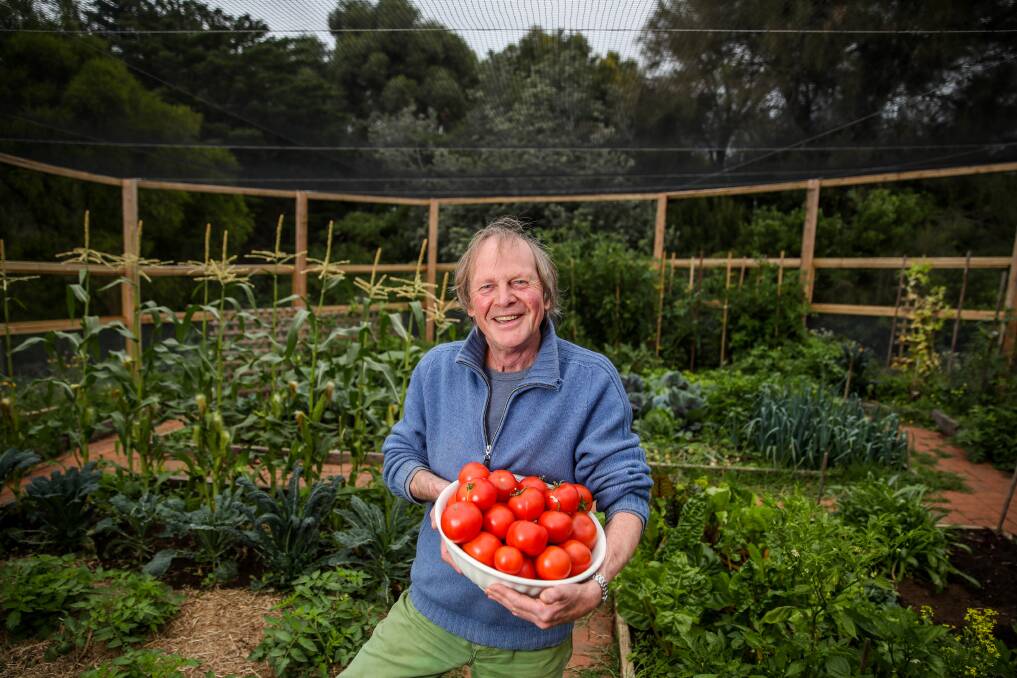
There is something special about growing and eating your own vegetables, as JENNY McLAREN finds out from people who have developed their own unique gardens.
Subscribe now for unlimited access.
or signup to continue reading
Richard Crawley hasn't quite made up his mind whether his new vegie garden looks like a bear-fighting pit or Shakespeare's Globe Theatre.
With its eye-catching octagonal design and fortress-like construction, it would be worthy of either.
One thing he's pretty sure of though, is that the bountiful crop of vegetables now flourishing inside it is safe from any wildlife in search of a free lunch.
The Tower Hill musician and photographer created the vegie patch during the COVID lockdown, partly to fill a creative void during his live performance hiatus, and, like many locals with time on their hands and the threat of lockdown food shortages, to rediscover the satisfaction of home-grown vegetables.
"I thought if I can't play music, I might as well grow vegetables," quips the front man for Rolling Stones-inspired band Tumbling Dice and rhythm and blues outfit the Black Belts.
London-born Crawley turned to playing his favourite music and formed the bands in recent years after early career success as a celebrity rock and roll photographer.
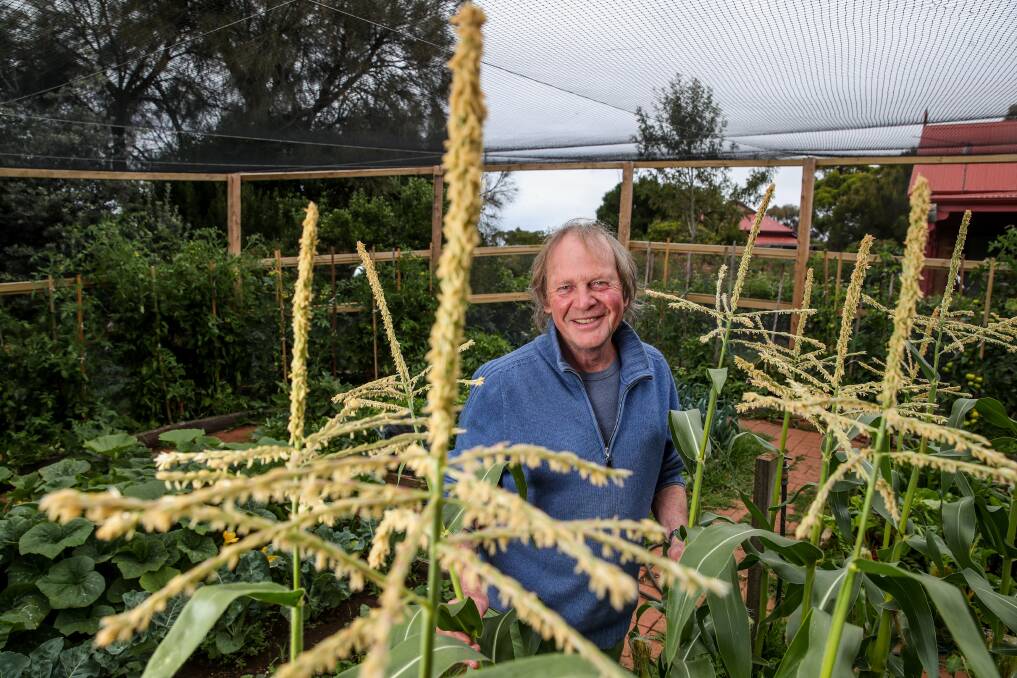
Among his best recognised work is an iconic shot of Stones' front man Mick Jagger taken during a 1973 Melbourne concert.
With the next Tumbling Dice live gig scheduled for Port Fairy in June, it will be more than 18 months since either of Crawley's bands last played in front of an audience.
In the meantime, he set himself a challenge. If he was going to have a vegetable garden, he wasn't going to share it with the local wildlife.
Crawley previously grew vegetables on the six-acre Tower Hill property after moving there in 2002 with his late wife Carol to run a bed and breakfast.
But that was before he planted 600 trees and the only vermin to speak of were a few rodents.
"The kangaroos were pretty scarce and because there weren't many trees, possums weren't a problem either," he explains.
The trees grew beautifully, but with them came the pests, creating a haven for rabbits, rats, mice, possums, kangaroos, wallabies and all manner of birds.
Keeping them out of a new vegie garden, he discovered, would require more than a little ingenuity. "I thought I would just Google 'pest-proof gardens' and it would be all there but it's not," he says.
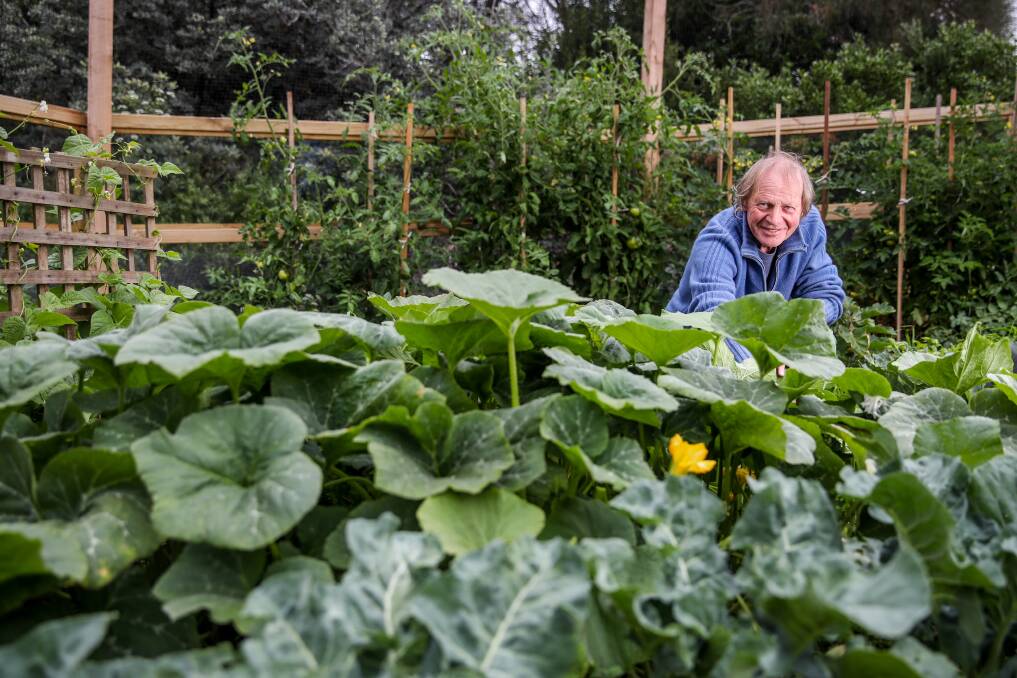
Undeterred, Crawley was inspired by the memory of an enclosed kitchen garden he'd once seen on a trip to Kenya.
"It was a similar sort of construction, built to stop monkeys, lions and the odd rhinoceros," he says.
Many hours of research and a phone call to an exotic bird breeder in North Queensland later, the intrepid gardener was confident he had a design sturdy enough to repel at least most Aussie vermin.
With the help of his mate Paul Schipper, Crawley built the structure over the existing octagonal brickwork base of a long-neglected, overgrown weed-infested plot abandoned after Carol died in 2009.
The first step was to install a 900mm-high mouse and rat-proof mesh, above which was placed a 500mm band of polycarbonate clear plastic, slippery enough to foil any climbers.
"Nothing can climb up it," Crawley insists.
"Remembering that a rat can jump vertically three feet but it does mean that every surface has to be covered, including all the wood structure.
"Anything that is not covered, a rat will find a way, let alone a possum."
Listen to the latest episode of our weekly podcast The Booletin and Beyond:
Topping that is a strip of stainless-steel reinforced netting to the 3.6m roofline.
The roof itself consists of UV-stabilised bird-proof netting designed to last a decade, while cypress pine posts concreted to the ground should be still standing in 50 years, according to Crawley.
The result is an impressive structure with a perimeter of 45 metres over an area of roughly 13 by 11 metres.
"I have actually constructed the formwork for a small house," he jokes.
A virtual larder of organic vegetables and herbs now flourishing in four beds ringed by a metre-wide border of 32 tomato plants is proof of its success.
"So far nothing's got in there except me," says Crawley, who delights in stepping out of his kitchen and into the garden to enjoy the fruits of his labours.
"I'd forgotten how amazing it is to pick a bit of silver beet and be able to eat it three minutes later."
In the rich volcanic soil supplemented by organic fertilizer, there's not much that doesn't grow. Happily self-sufficient, Crawley has more than enough produce to share with friends.
The vegie patch includes eight kinds of tomatoes, silver beet, celery, capsicums, beetroot, leeks and lettuce, various cabbage varieties, brown and spring onions, strawberries, broccoli, beans, snow peas, corn, kale, cucumbers, pumpkins and aubergines.
An equally plentiful herb bed keeps his kitchen well stocked.
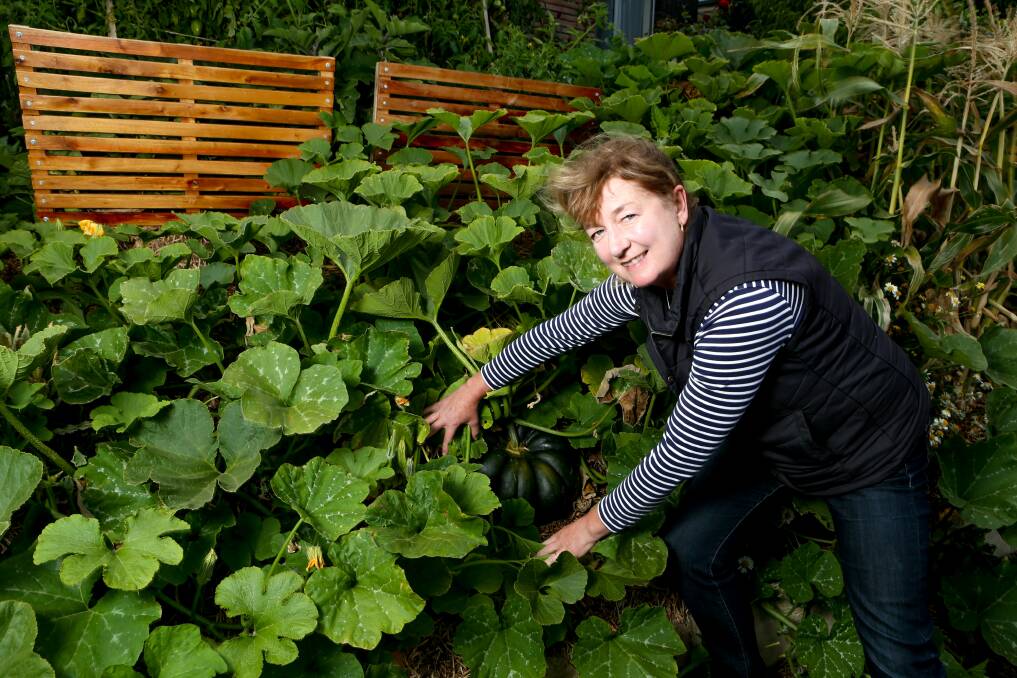
Warrnambool music and art teacher Merran Moir and husband Peter have always been fairly self-sufficient when it comes to fruit and vegetables.
But the increased number of people frequenting the walking track adjacent to their garden during lockdown meant time out in the garden tended to become a social experience. The Moirs went a step further, with any excess produce placed on the walking track to give away.
Since moving to the property two years ago, the couple has transformed its sloping backyard from "a blank canvas" to a three-level terraced cornucopia of vegetables, fruit and potager plantings using permaculture principles where possible.
Chickens share the space, herbs are grown close to the kitchen and bees are encouraged. Mrs Moir, who ran a successful kitchen garden project at Cudgee Primary School several years ago, says they aim to eventually make their garden as closed a system as possible.
"We would collect our own seeds, grow green manure crops, compost waste from the kitchen and the chickens, collect rain water in tanks for watering and grow greens for the chickens as well as us," she says.
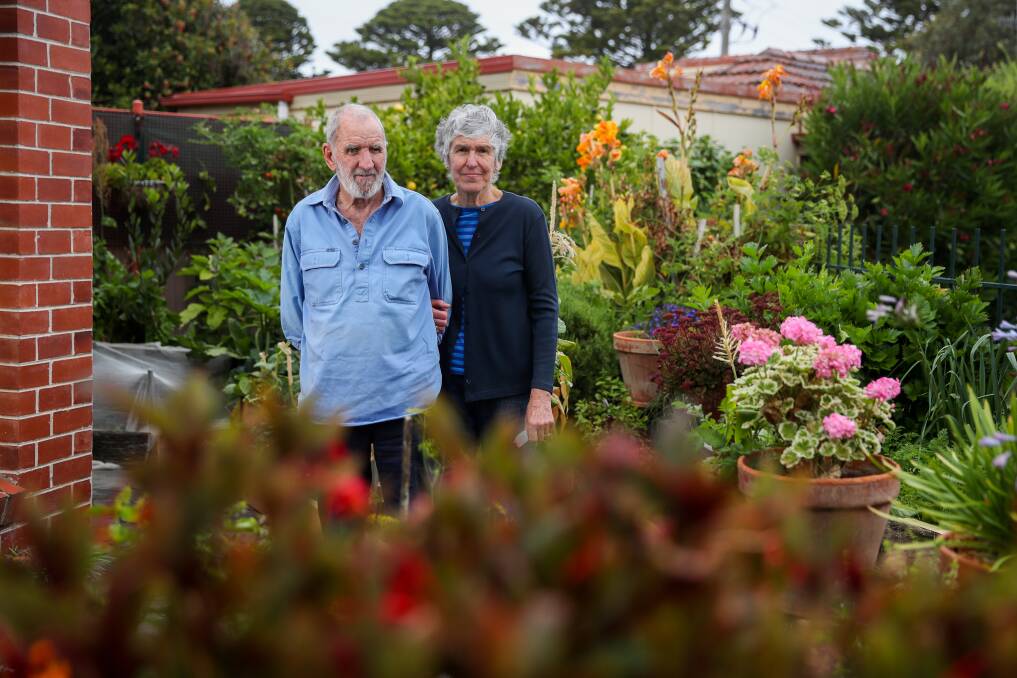
For all those newly-converted lockdown gardeners, Port Fairy's Brian and Liz Kenna are in inspiring example of just what can be achieved with limited space.
Since they downsized from their two-acre Yambuk property to a "smaller than average" house block in Port Fairy four years ago, the pair has turned almost its entire front yard into a virtual mini market garden.
Except for one Calla lily and a lemon tree, the pocket-sized patch is exclusively devoted to vegetables. In an area not much bigger than four by two metres, retired builder Mr Kenna created raised beds to cultivate enough vegies, barring the likes of potatoes and pumpkins, to be self-sufficient and then some.
Any excess they can't consume, preserve, pickle or sauce is often traded with others for produce like fruit and cane berries which they simply don't have enough room to grow.
The Kennas have had vegie gardens for most of their 53 years of married life and previously owned a health shop. When they spruik the health and economic benefits of home-grown, they speak from experience.
"It's a way of life and I just hope people who've been inspired to create vegetable gardens during COVID keep it up," Mr Kenna says.
Our journalists work hard to provide local, up-to-date news to the community. This is how you can access our trusted content:
- Bookmark https://www.standard.net.au/
- Make sure you are signed up for our breaking and regular headlines newsletters.
- Follow us on Twitter, Instagram and LinkedIn.
- Tap here to open our Google News page.
- Join our Courts and Crime Facebook group and our dedicated Sport Facebook group.
- If you have subscribed, join our subscriber-only Facebook group.
- Subscribe.
Have you signed up to The Standard's daily newsletter and breaking news emails? You can register below and make sure you are up to date with everything that's happening in the south-west.














